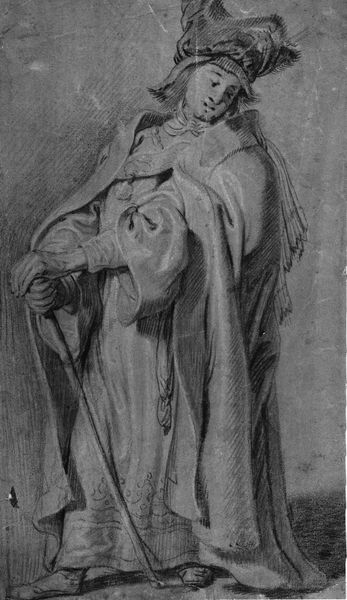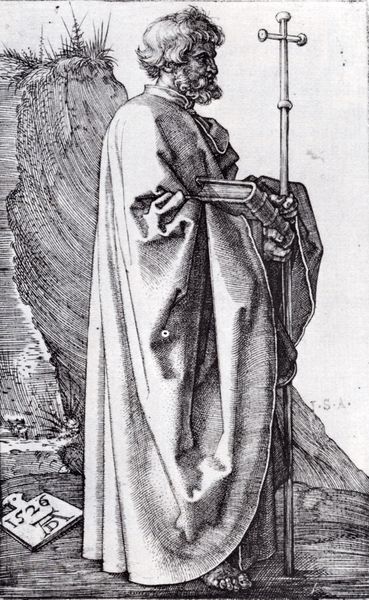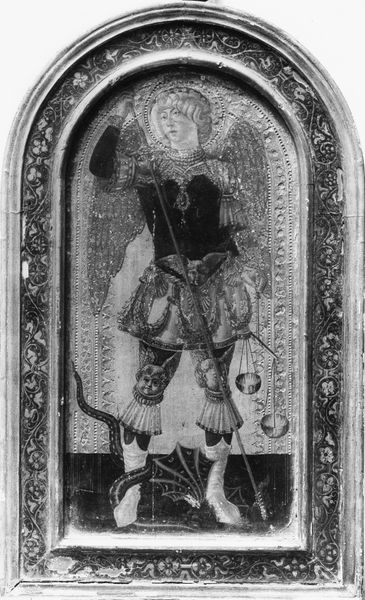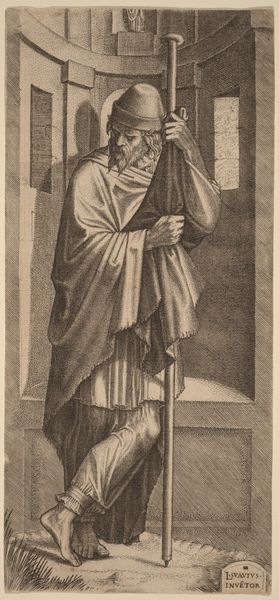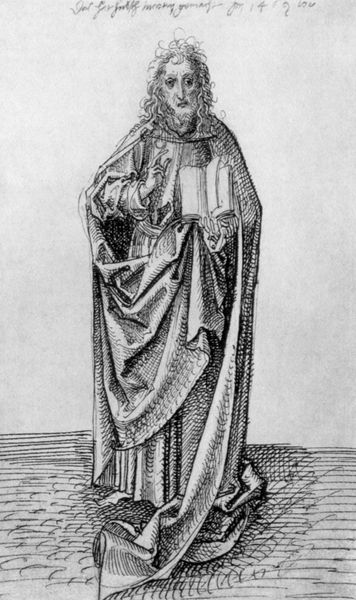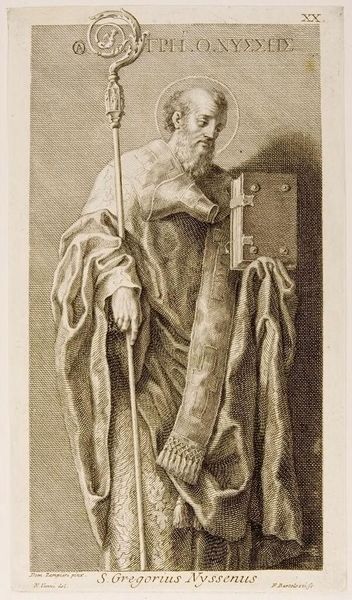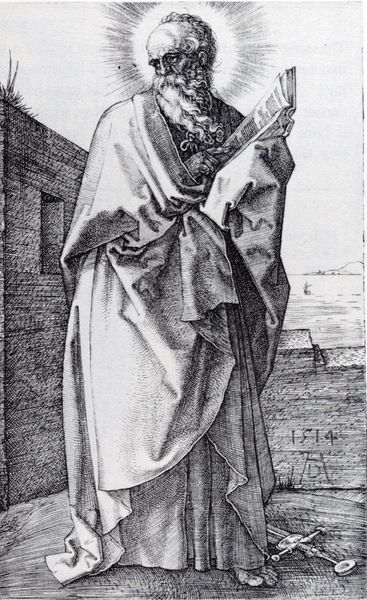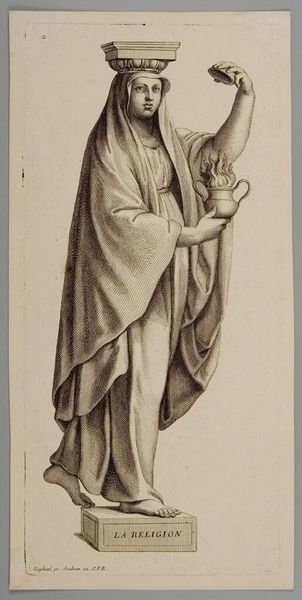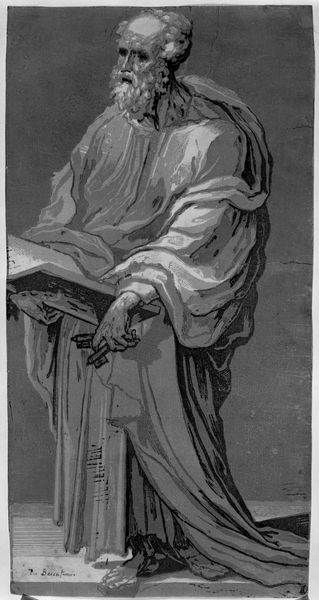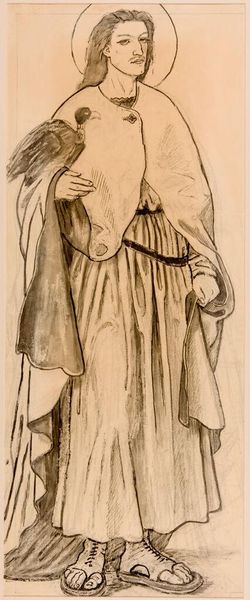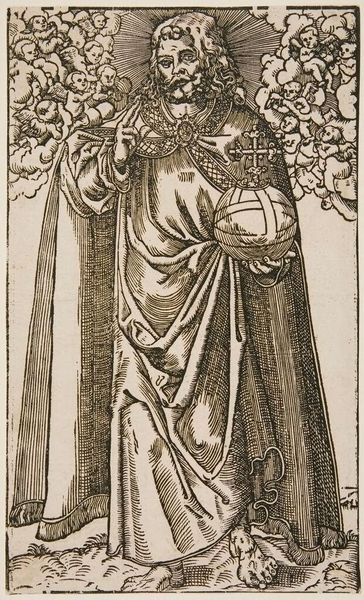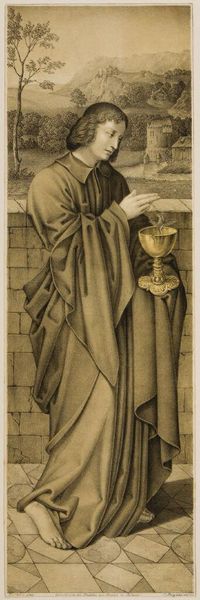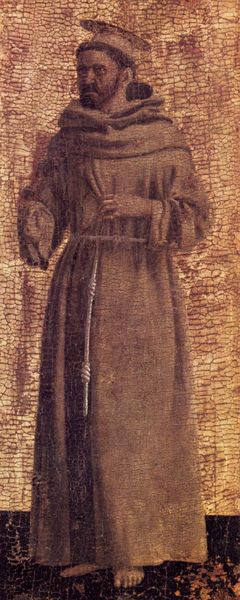
tempera, painting
#
portrait
#
medieval
#
tempera
#
painting
#
history-painting
#
international-gothic
Dimensions: Overall, with shaped top and engaged frame, 60 x 16 1/2 in. (152.4 x 41.9 cm); painted surface 52 3/8 x 16 1/2 in. (133 x 41.9 cm)
Copyright: Public Domain
Niccolò di Buonaccorso created this image of “Saint Paul” in the late 14th century, using tempera and gold on a wood panel. Niccolò worked in Florence, Italy, during a time of significant religious and social change, a period in which the Catholic Church played a central role in daily life and politics. Here, Paul is presented as a figure of authority, holding a sword, symbolizing his martyrdom, and a book, representing his epistles. He stands tall, his gaze direct, embodying the power and influence of the Church. This representation reflects the traditional, patriarchal structures that defined much of the medieval world. Yet, within this context, Paul’s own story as a convert and his advocacy for the inclusion of Gentiles in the early Christian community also suggest themes of transformation. Consider how the painting serves to reinforce societal norms while hinting at the potential for change. Reflect on the power dynamics inherent in religious representation and the way these images shape our understanding of history and identity.
Comments
No comments
Be the first to comment and join the conversation on the ultimate creative platform.
